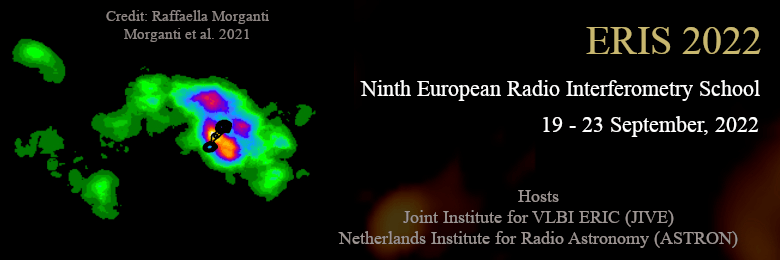
News from ORP
by Hélène Dworak (CNRS/LAM, France)
OPTICON RadioNet Pilot (ORP) is one of the European Commission's transnational access 'pilot' programs under EC H2020, launched in March 2021. This four-year project brings together 37 institutions to support and develop seamless access to radio and optical facilities. A new Scientific Coordinator, Stephane Basa was appointed by the Board on 28 March 2022, follwoing CNRS's proposal, responding to the nomination of Jean-Gabriel Cuby as Executive Director of the CFHT. Through various processes, ORP brings together radio and optical astronomers to create a stronger community to better exploit the opportunities of multi-wavelength science and to benefit from each other's expertise.
To realise these ambitions, a process of coordinated community involvement at the strategic level is taking place within the project. For example, the first ORP Telescope Directors’ Forum took place on 1-2 December 2021 in Paris (France) as a hybrid meeting. This forum, traditional in the OPTICON programmes, was attended by over 50 participants from both the optical and radio communities. It provided a stimulating platform for discussion and collaboration, to present and raise awareness of the main radio and optical infrastructures that are part of ORP, and to discuss issues relevant to the development and implementation of ORP's mission and strategy.
The ORP is providing a coordinated platform to address the key challenges of our communities, such as protecting Dark and Quiet Skies for future astronomical observations. In just the last two months, four meetings have taken place bringing together policy and technical experts. The ORP is creating material to inform and complement the advocacy and lobbying in response to the external threats posed by mega-constellations of satellites. Through its policy-oriented forum and technical activities, led by Michael Kramer (MPIfR), ORP will contribute to the IAU Centre for the Protection of the Dark and Quiet Sky from Satellite Constellation Interference.
Providing Transnational and Virtual Access to observatories and nodes around the world is the main action of ORP. For the optical and infrared telescopes and networks of telescopes, a Common Time Allocation Committee (CTAC) allocates the time across infrastructures based on scientific merit. Since the project began, 504.6 nights were granted to 55 PIs applications. The fourth CTAC meeting for 2022B will be organised on 25-26 April 2022. Moreover, virtual access to a network of small telescopes is continuously provided through a dedicated tool, dubbed BHTOM, maintained by the University of Warsaw (Poland). It enables the scientists to request and collect long-term time-domain observations of their targets of interest, e.g. alerts from the ESA's Gaia space mission. The multi-wavelength extension of BHTOM is currently under construction in collaboration between Universities of Warsaw, Torun and JIVE.
The ORP portfolio of radio infrastructures consists of four arrays (among them European VLBI Network), the four world-class single dish telescopes , the European ARC nodes, and virtual access to the archives of LOFAR and WSRT. Since March 2021, a total of 3,616.5 observing hours have been provided for 89 projects and additionally 7 ALMA projects have been supported by ARCs.

to the spiral galaxy Messier 81 (M81). Credit: Daniëlle Futselaar/ASTRON.
Through the ORP program, astronomers can also benefit from recent technical developments of the participating infrastructures. For example, in January 2022, the Northern Extended Millimetre Array (NOEMA) operated by IRAM reached its full sensitivity with the commissioning of its 12th antenna. In addition, the Yebes Observatory has recently completed the design, implementation and installation of a new broadband receiver for its 40-m diameter radio telescope. The receiver is sensitive in the 4.5 to 9 GHz frequency range, and replaces two older, frequency-limited receivers in C-band (5 and 6 GHz) and X-band (8 GHz), allowing simultaneous observation in these two bands and in additional, previously unavailable frequencies.
State-of-the art equipment such as these allow astronomers at an international level to contribute to scientific excellence and discoveries. The time allocated by ORP to EVN and Effelsberg telescopes enabled the publication of the article “A repeating fast radio burst source in a globular cluster” by F. Kirsten, B. Marcote, K. Nimmo and al. in Nature, as well as the article “Burst timescales and luminosities as links between young pulsars and fast radio bursts” also by K. Nimmo, F. Kirsten, with J.W.T. Hessels and al. in Nature Astronomy.
In parallel, ORP is leading the adoption of a set of common principles and tools to enable all scientists and researchers to have simplified and improved access to ORP facilities. Following several meetings on common standards and a data model, and an audit of available Proposal Submission tools (PST), the work package led by Paul Harrison (UNIMAN) is focusing on Northstar as the baseline for a common tool where modern features may be incorporated. This will be defined though a widened audit and a review involving multi-facility involvement. Via an open architecture model from the start, and engagement with radio and optical ORP facilities, PC members and potential users, it is envisaged that the common standards and data model will be adopted across multiple ORP facilities and wider adoption of common standards beyond ORP is also a possibility (e.g. SKA).
ORP also contributes to improving key infrastructure services through targeted technical developments. Two workshops on Adaptive Optics (AO) were organised in December 2021 and January 2022, one on the Wave-Front Sensor 2021 (WFS2021) to share and discuss the latest advancements in WFS technologies and applications, and the other on AO Telemetry Standard, where the first implementation developed by the University of Porto was presented to different users. Deployment of the method to specific AO instruments will be tested in the coming months. On the Very Large Telescope Interferometer (VLTI) side, one of the three joint research activities planned to support the integration of new observing modes has started in February 2022 at KU Leuven (Belgium) and a big community-wide ORP-supported meeting is planned in Exeter (UK) at the end of April 2022.
Training events are also being scheduled for users in the radio and optical fields. John McKean (ASTRON) and Heidi Korhonen (ESO), leaders of the radio and optical trainings respectively, developed a common registration form and satisfactory survey to be used for all ORP funded schools, to monitor the training quality and impact.

The ORP IRAM 30m School took place on 15-19, and 22-23 November 2021, the online event welcomed 167 students. The school combined topics on (sub)millimetre astronomy with technical lectures on instrumentation, observing techniques, and data processing and, very importantly, with observations carried out at the 30m telescope. Moreover, the 9th European Radio Interferometry School (ERIS 2022) will be hosted by JIVE and ASTRON in Dwingeloo (the Netherlands) on 19-23 September 2022. Registration for the school is open until 15 May 2022 .
For more information, please visit the ORP website, follow us on Twitter and subscribe to the ORP newsletter to be informed of the development.